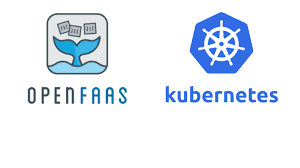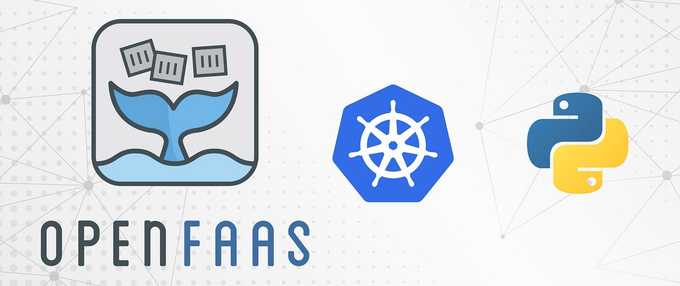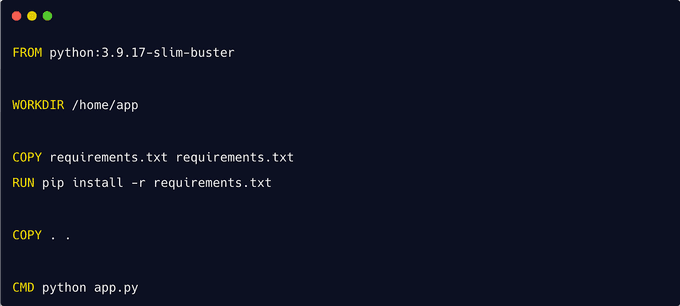
Discover the Potential of Serverless Computing with OpenFaaS and Kubernetes as Catalysts for Change 🐋
Content
OpenFaaS and Kubernetes: Orchestrating Serverless Symphony 🎶
📇 Overview
OpenFaaS and Kubernetes are catalysts for change in the world of serverless computing. Together, they enable organizations to scale new heights with efficiency and simplicity.
OpenFaaS, an open-source serverless platform, harmonizes perfectly with Kubernetes, the renowned container orchestration system, to achieve the true potential of serverless computing. With OpenFaaS and Kubernetes, businesses can embrace the power of serverless computing and embark on a transformative journey toward a future of agility, scalability, and boundless possibilities.

🔭 Goals & Objectives
In this blog, we will explore the powerful combination of OpenFaaS and Kubernetes and explore how they are revolutionizing the world of serverless computing.
Understanding Serverless Architecture: Simplifying Code Execution without Infrastructure
Serverless architecture refers to an innovative approach in which the core business logic is implemented as functions that can be executed in a stateless manner. Contrary to its name, serverless does not imply running code without servers; rather, it entails eliminating the need for manual hardware and infrastructure provisioning during the development process. In this model, the application still operates on servers, albeit ones that are managed by external service providers.
Function-as-a-Service (FaaS) plays a big role in enabling serverless architecture. With FaaS, developers can focus solely on writing the functions that represent the specific business logic, without concerning themselves with the underlying infrastructure or server management. FaaS platforms, such as AWS Lambda, Azure Functions, or Google Cloud Functions, allow developers to deploy their functions and execute them in response to specific events or triggers.
The beauty of FaaS lies in its event-driven nature. Functions are executed only when a specific event occurs, such as an HTTP request, a file upload, or a database update. This event-driven approach brings several benefits. First, it enables auto-scaling, as the FaaS platform dynamically scales the execution environment based on the incoming workload. This ensures that the application can handle sudden spikes in traffic without any manual intervention.
Exploring OpenFaaS: A Technical Overview of Open-Source Function-as-a-Service
OpenFaaS is an open-source Function-as-a-Service (FaaS) platform that offers developers a flexible and scalable solution for building serverless applications. By leveraging containerization technology, OpenFaaS allows developers to package their functions into lightweight, independent containers that can be easily deployed and executed in a serverless environment. With OpenFaaS, developers have the freedom to write functions in any language of their choice, enabling a polyglot development approach.
Under the hood, OpenFaaS relies on Docker and Kubernetes for container orchestration, providing robust scalability and high availability. The platform supports automatic scaling, allowing functions to handle varying workloads seamlessly. Additionally, OpenFaaS integrates with popular cloud providers, allowing developers to leverage existing cloud services and resources.
Getting Hands-On with OpenFaaS
In this hands-on exploration of OpenFaaS, we will follow a straightforward process to deploy a Flask microservice as a serverless function. The steps involve setting up Kubernetes and OpenFaaS, dockerizing the Python application, creating a custom function, deploying the function, and finally, testing its functionality. This practical approach will provide a firsthand experience of leveraging OpenFaaS for serverless development. Let's start!
❕ Setting up the environment
Setting up Kubernetes and OpenFaas involves deploying OpenFaaS on either a local or remote Kubernetes cluster. In our case, we will utilize the EKS Kubernetes cluster to deploy OpenFaaS. The deployment of OpenFaaS can be accomplished using either Helm or arkade.
Helm serves as a Kubernetes package and operations manager. Users can utilize Helm to publish their application configurations in the form of Charts.
On the other hand, arkade is a Go-based open-source CLI that simplifies app management. Internally, arkade leverages helm charts and kubectl to install applications onto the Kubernetes cluster.
In this demo, we will use arkade to install OpenFaas as it is very easy and quick to use.
✅ Install arkade
Use the following command to install arkade.
# Note: you can also run without `sudo` and move the binary yourself
curl -sLS https://get.arkade.dev | sudo sh
arkade --help
ark --help # a handy alias
# Windows users with Git Bash
curl -sLS https://get.arkade.dev | sh✅ Install OpenFaas
Use arkade install to configure OpenFaaS with a cloud LoadBalancer, in this instance an "ALB" will be created.
arkade install openfaas --load-balancer
=======================================================================
= OpenFaaS has been installed. =
=======================================================================To verify if the installation is successful we can execute the following command:
kubectl -n openfaas get deployments -l release=openfaas,app=openfaasOr to verify that openfaas has started, run:

To retrieve the admin password, run:
echo $(kubectl -n openfaas get secret basic-auth -o jsonpath="{.data.basic-auth-password}" | base64 --decode )✅ Install faas-cli
Once OpenFaas is installed, we must install faas-cli.
The faas-cli is required to deploy and test functions with OpenFaas. Execute the following command to install faas-cli.
curl -SLsf https://cli.openfaas.com | sudo shIf basic auth is enabled, you can now log into your gateway:

Then Open UI and you will find it like below:

Flask on Fire: Dockerizing the Python Application
In simpler words, dockerizing means using special containers called docker to package, deploy, and run applications.
We will use docker to package and run the sample Flask application.
Prepare the Codebase
To set up the application, you can make a copy of my sample Python application project by running the provided command in any directory you prefer.
git clone https://github.com/seifrajhi/python-openfaas-demoWe will use this Flask application to be packaged into our docker image.
Brief explanation of the Dockerfile
A Dockerfile is essentially a textual document that contains specific instructions on constructing a Docker image for our project.

First, we need to create the image by using the Dockerfile.

To verify the created image, you can use the following command:

Pushing Docker Image to Docker Hub
To upload the Docker image to Docker Hub, we can use the docker tag and docker push commands. This step enables us to create, test, store, and distribute container images through the Docker Hub platform.

Now, that the docker image is created, we can use this docker image to run the Flask application from anywhere we want.
Building a Serverless Function
In the preceding stages, we used the arkade CLI to install OpenFaaS on a Kubernetes cluster.
Now, we can generate a function using the OpenFaas template, which we can subsequently deploy within OpenFaas.
Since we have a dockerized Flask application we will use the dockerfile template of OpenFaas to create our function as follows:

Container images are used to store OpenFaas functions. In this case, we will use DockerHub as the repository for our image. Consequently, we will establish the environment variable OPENFAAS_PREFIX with the username associated with DockerHub.
faas-cli new enables us to create a new function via the dockerfile template in the current directory. Here, we have created a function called sample-openfaas-demo using the OpenFaas template dockerfile. After executing the above commands we will find that the following files were created:
sample-openfaas-demo.yamlsample-openfaas-demo/Dockerfile
We will now make the necessary changes to files in order to deploy our serverless logic.
version: 1.0
provider:
gateway: http://a55330be826824eefb8b679774fa42b2.eu-west-1.elb.amazonaws.com
functions:
sample-flask-service:
lang: dockerfile
handler: ./dockerfile-sample/python-openfaas-demo
image: rajhisaifeddine/python-openfaas-demo:latest
environment:
RAW_BODY: True
write_timeout: 30s
read_timeout: 30s
exec_timeout: 30s
labels:
com.openfaas.scale.min: 1
com.openfaas.scale.max: 5
com.openfaas.scale.zero: "true"Then, we update the Dockerfile for our function.
FROM ghcr.io/openfaas/classic-watchdog:0.2.1 as watchdog
FROM rajhisaifeddine/python-openfaas-demo:latest
RUN mkdir -p /home/app
COPY --from=watchdog /fwatchdog /usr/bin/fwatchdog
RUN chmod +x /usr/bin/fwatchdog
# Add non root user
RUN addgroup -S app && adduser app -S -G app
RUN chown app /home/app
WORKDIR /home/app
USER app
ENV fprocess="python app.py"
ENV upstream_url="http://127.0.0.1:5000"
ENV mode="http"
ENV cgi_headers="true"
# Set to true to see request in function logs
ENV write_debug="false"
HEALTHCHECK --interval=3s CMD [ -e /tmp/.lock ] || exit 1
CMD ["fwatchdog"]Deploy the Function
The function is now ready to be deployed. We can run the following command to deploy the function.
faas-cli up -f sample-openfaas-demo.yamlThe above command will perform the following actions:
- Creates a local container image of the function.
- Pushes the image to the remote registry, which in our case is the docker hub.
- Using the OpenFaas REST API, creates a deployment inside Kubernetes Cluster and a new Pod to serve the traffic.
Testing the Function
We have deployed our function as a Serverless function with autoscaling enabled in OpenFaas. Before proceeding to test our function we must set up monitoring of the process to understand how serverless actually works. For monitoring purposes, we can use Grafana.
We can easily install Grafana as a pod in Kubernetes Cluster using the below command:

Next, use port-forward from our local computer to access Grafana the URL:

Open the OpenFaas Grafana Dashboard from http://127.0.0.1:3000/. Enter the default password for Grafana, which is admin: admin. The OpenFaas Grafana Dashboard would look as follows:

From the Dashboard, we can see that the number of replicas has increased to 1 from 0 to serve the request. This replica count will further increase depending on the load till the com.openfaas.scale.max specified previously.
The way autoscaling works in the background is that the requests are blocked until the desired count of replicas is achieved. We can verify that from the gateway logs as follows:
kubectl logs -n openfaas deploy/gateway -c gateway -f🌟 Wrap-up
The combination of OpenFaaS and Kubernetes has unlocked new possibilities in serverless computing. These powerful tools have acted as catalysts for change, enabling businesses to scale new heights in terms of efficiency and flexibility. By harnessing their potential, organizations can embrace the future of technology and revolutionize the way they deploy and manage applications. With OpenFaaS and Kubernetes orchestrating serverless environments, the sky's the limit for innovation and growth.
Until next time, つづく 🎉
💡 Thank you for Reading !! 🙌🏻😁📃, see you in the next blog.🤘 Until next time 🎉
🚀 Thank you for sticking up till the end. If you have any questions/feedback regarding this blog feel free to connect with me:
♻️ LinkedIn: https://www.linkedin.com/in/rajhi-saif/
♻️ X/Twitter: https://x.com/rajhisaifeddine
The end ✌🏻
🔰 Keep Learning !! Keep Sharing !! 🔰
📅 Stay updated
Subscribe to our newsletter for more insights on AWS cloud computing and containers.
